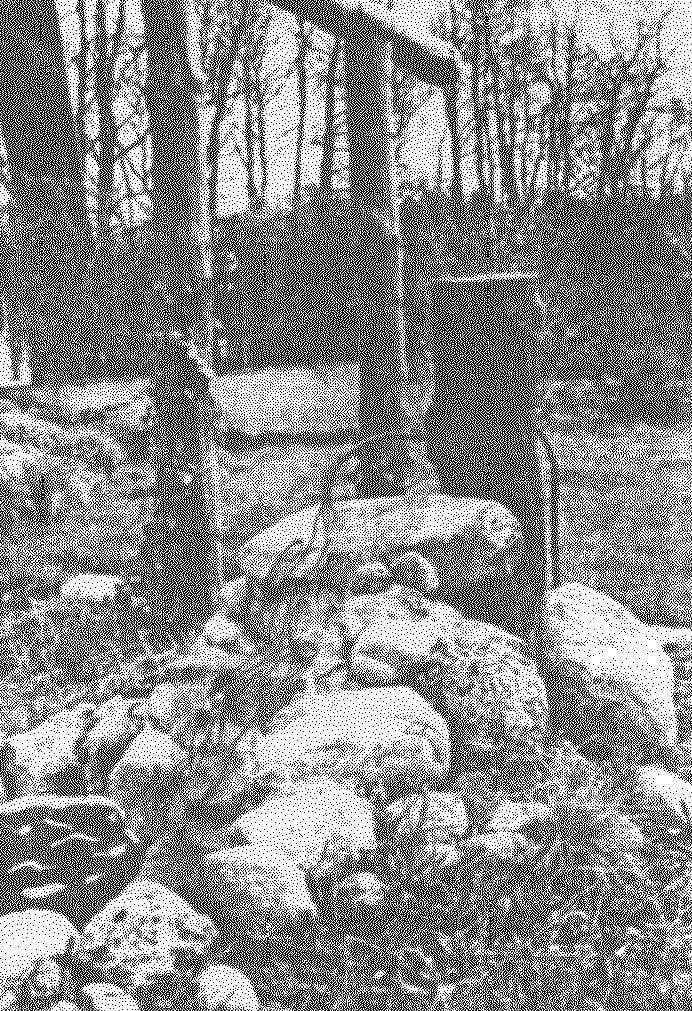 In addition to the traditional garden chores gardeners are more inclined today to use their sites primarily for relaxation, socializing with friends and nature. Accordingly, for these goals equip and equip the country farmstead. Along with the usual flowerbeds and green lawns are increasingly lined with durable, beautiful tile paths, erecting ornamental fence and wall, comfortable Lounges with sun-gazebo-pergola and relevant fittings, arrange a miniature pools.
In addition to the traditional garden chores gardeners are more inclined today to use their sites primarily for relaxation, socializing with friends and nature. Accordingly, for these goals equip and equip the country farmstead. Along with the usual flowerbeds and green lawns are increasingly lined with durable, beautiful tile paths, erecting ornamental fence and wall, comfortable Lounges with sun-gazebo-pergola and relevant fittings, arrange a miniature pools.
The novelty in this “gentleman’s set” for holiday vacation can become a mini-fountain, which it is possible to construct, using the proposed recommendations of the magazine “Nail” for fans to make all their own hands. For the fountain don’t even have to have on site water supply, because the principle of operation of such a source is to pass water in a closed cycle: electric pump (of the type known to all cottagers “Baby”) pumps water from a tiny pool in the fountain, where the water returns back into the pool.
Device mini fountain
Appearance and design features of a makeshift fountain will depend on the creative taste and ingenuity of the owner. However, under either option the basis of the composition will be two main nodes: the actual jet part and the receiving container of water.
The fountain itself can be anything from simple columnar stand with attached hose (Fig.1) to a special stone wall, decorated with fragments of old moldings (Fig.2) or using unexpected various elements found in the attic or even on the dump.
Whatever the real fountain — jet it falls necessarily in any “Cup” underneath the swimming pool or pond. Their role in the embodiment under consideration, a mini-fountain may play any embedded in soil container filled with water (e.g., barrel, old tub, old tub) or specially constructed stone “bowl”.
The “bowl” of the fountain
One of the most popular solutions of the mini-pool is, the compliance of concrete. The walls and edges can then be finished with ceramic or stone. Versions of such devices have been published in the journal “modelist-Konstruktor” (“Build lake”, No. 8-99, “Accumulated water” No. 7-91, “Backyard lake”, No. 7-90). This miniature pool with trim and floral composition gives the entire area an individual feature.
Consider the variant of such a device, it is available for self-production.
A suitable support for the pool, accumulating the water, is a concrete Foundation slab on which and place it (see Fig.2). If not ready, the Foundation is molded in place. The ground under him choose to a depth of about 25 cm, and then placed 10-cm layer construction of small rubble or gravel. For strip Foundation on the thus prepared Foundation poured 10-inch layer of concrete, flooding in him, to strengthen the metal mesh.

Fig. 2. Wall fountain:
1 — decorative wall; 2 — borders of the basin (clinker); 3 — electrical equipment (socket and wire); 4 — base of the pool (concrete slab); 5 — moisture-resistant pad (ceramic tile); 6 — sand-gravel cushion base; 7 — water; 8 — pump on a stand; 9 — the internal lining of the pool; 10 — Bionda bowl pool; 11 — ornamental plants
To improve the properties of concrete added to it the plasticizer — emulsion, e.g. PVA glue. It increases the plasticity of the concrete and increases the strength of made from it of a structural element, reducing the tendency to crack.
A concrete slab as a solid basis for a pool, maybe (as an option) to present his bottom. The implementation of the walls of the concrete bowl of the desired shape in this case begin with the device casing. After the reinforcement steel rods of 6 mm in diameter produce a fill formwork with concrete mix. The concrete gains the required strength in about four weeks. The quality of the pool, especially the design of the wall fountain requires diligent execution of corners and junction of walls with the bottom, which determines not only its aesthetics, but also strength.
If the wall on which should be the fountain, you have to make in it deepening (a width of approximately 1.5 cm and a depth of 2 cm) and after laying of pipes for water (plastic or metal, usually with a diameter of 0.5 inch) to fill their building with a cement mixture. You also need to remember about the implementation of the relevant holes in the wall and in the bowl for the passage of electrical wires and hose from the pump. If possible, the wire can be hidden in horizontal joints of the wall, on the back of which is installed an electrical outlet, protecting her from the rain with a visor or box.
At this stage, we should also think about decorative lighting of fountain and his entourage.
Protivolakozna insulation
The junction of the concrete slab to a wall should be built, for example, thin Styrofoam sheets. For the internal hardening of the pool is great protivolakozna paint, which can act as the final finishing layer. She selected a blue, white or beige.
In that case, if we want the inner surface of the pool to lay ceramic or stone tiles, is to consolidate its two-piece preparation type of epoxy glue. He applied twice and spread with a brush so that to the waterproofing layer with a minimum thickness of 3 mm. Additional protection of places subject to deformation, can be zamurovannye in a solution of special metal parts and sealing strips. After 24 hours begin paving, using a special klausul mixture and a mixture for grouting. The pool is filled with water within seven days after completion of the work.
Finish source
Wall can be decorated with ceramic or stone floors and a pool outside with stone or clinker brick; the inner part is laid tile. It is also possible to produce the finish concrete slab on which the pool. The outer coating will give aesthetic appearance and will effectively conceal the electrical and water equipment.
For the execution of the stonework can use the cement mixture, and in the case of veneer ceramics should remember that for bonding it is best to use elastic, frost and water resistant mortar. For bonding ceramic tiles is to use a mixture of white cement, which does not cause repainting of the surface. The use of clinker requires the use of special flexible mastic. In fact, this material is mortar with mineral additives. Masonry is produced in full seam, minimizing the possibility of penetration of water through it. The same mixture you can RUB the seams in the bricks. Possible contamination immediately eliminate in the process, washing away the traces and stains from cement and lime mortars.
Planting climbing plants, installation of plants in pots will enhance the decorative effect of the whole composition.
The start-up and commissioning
Before turning on the pump need to make sure he was completely in the water, otherwise it can be a failure. When choosing a pump pay attention to its power: it is usually enough 10 — 30 W for small sources. In the case of using a powerful motor is arranged in the wall of the receptacle receiver is for intermediate accumulation of water and the liquid flows from it by gravity (Fig.Z). This option would require the device in this tank is a float limiter for the incoming water (like a toilet tank) and the associated switch-limit switch for turning off the engine after filling the receiver.

Fig. 3. Version of the fountain with the receiver:
1 — base; 2 — concrete bowl; 3 — bath pool; 4 — the motor on the stand; 5 — protruding tiles (plates) of the cascade speed; 6 — “tap” receiver; 7 — a decorative wall; 8 — capacity receiver; 9 — float restrictor of water flow; 10 — limit switch pump; 11 — the water supply hose from the pump; 12 — outlet; 13 — wiring
The water level in the pool to systematically monitor and replenish. From time to time check that the algae did not clog the pump filter. Therefore, the pump must stand on a stone or brick base, and not directly on the bottom of the pool. After the end of the season you need to pull the pump out of the water, and water from the pool drain.
Durability
The height of the wall fountain, or rather the location of the “tap” must be equal to half the width of the pool: in this case, the water is not sprayed beyond it.
The elements used for construction and finishing even a small pool with a fountain, can weigh from a few dozen to several hundred kilograms. So you need to take care of its durable, reliable design. In connection with the specifics of the equipment, as well as the constant exposure to changing weather conditions, materials used to perform source must be frost – and water-resistant. Vitality absorbing elements of reason and elements in direct contact with the water is increased by protecting their waterproofing and hydrophobic materials.
Absorbing stone, investkompanii elements, as well as a brick wall can be protected from the harmful effects of the environment with the hydrophobic silicone of the drug. Flowing over a wall of rain water further cleans it.
Made in such a way the fountain can be maintained in good condition and provide many years of service.
B. VLADIMIROV



